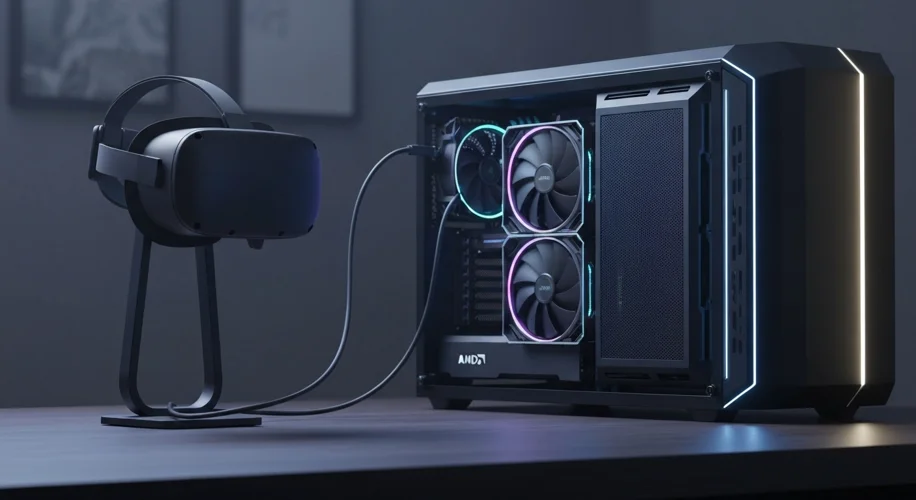So, you’re looking to dive headfirst into the world of PC Virtual Reality and wondering if your AMD graphics card can keep up. Specifically, let’s talk about the AMD Radeon RX 7800 XT. Is it a solid choice for VR? The short answer? Yes, it absolutely can be.
As someone who’s spent a good chunk of time tinkering with VR setups, I’ve seen firsthand how different GPUs handle the demands of immersive virtual worlds. PC VR, in particular, needs a powerful GPU because it’s essentially running two high-resolution displays simultaneously, and it needs to do it at a smooth, consistent frame rate to avoid motion sickness. That’s where the 7800 XT shines.
Performance with the RX 7800 XT in VR
The RX 7800 XT is a beast for its price point. It offers a great balance of raw power and VRAM (16GB of GDDR6, which is super important for VR textures and complex scenes). For most popular PC VR titles, you’re looking at a really enjoyable experience. Games like Half-Life: Alyx, which is a benchmark for VR experiences, run beautifully. You’ll be able to crank up the settings and enjoy crisp visuals without feeling like you’re wrestling with your hardware.
Sure, it might not always hit the absolute highest frame rates in the most demanding VR titles compared to some ultra-high-end competitor cards, but for the vast majority of users, the difference is negligible, especially when you factor in the cost. It’s a sweet spot card for getting into high-fidelity PC VR without breaking the bank.
Setting Up Your PC VR with AMD
Okay, let’s get practical. Setting up PC VR can sometimes feel like navigating a maze, but it’s totally doable. Here’s a quick rundown, focusing on wireless and wired options:
1. Wireless VR with ALVR:
ALVR is a fantastic open-source option that lets you stream VR games from your PC to your standalone headset (like a Quest 2 or 3) wirelessly over your Wi-Fi network. It’s a game-changer for freedom of movement.
- What you need: A strong Wi-Fi network (Wi-Fi 6 is ideal), your PC with the RX 7800 XT, your standalone VR headset, and ALVR installed on both your PC and headset.
- Setup basics:
- Ensure your PC is connected to your router via Ethernet for the most stable connection.
- Your VR headset should be connected to the same Wi-Fi network, ideally on the 5GHz band.
- Install the ALVR server software on your PC. You can usually find the latest releases on their GitHub page.
- Install the ALVR client app on your headset from the headset’s app store or side-load it if necessary.
- Launch both the server and client, and follow the pairing instructions. You’ll usually be prompted to allow the server through your firewall.
- In ALVR settings, you can tweak the video resolution and bitrate. Start with settings that match your headset’s native resolution and a moderate bitrate, then increase if your network can handle it for better visual quality.
- The RX 7800 XT handles the encoding for streaming really well, so you should see good performance.
2. Wired VR (Link Cable):
This is the most straightforward and often the most reliable way to connect. You’re tethered, but you get the best possible performance and lowest latency.
- What you need: A high-quality USB-C cable (or USB-C to DisplayPort adapter if your headset supports it directly), your PC with the RX 7800 XT, and your VR headset.
- Setup basics:
- Download and install the VR platform software (like SteamVR for most PC VR games).
- Connect your headset to your PC using the USB-C cable. Make sure it’s plugged into a USB 3.0 or higher port on your PC for best results – these are usually blue.
- If you’re using a Quest headset, you’ll need the Meta Quest Link software installed on your PC.
- Launch SteamVR. It should detect your headset and controllers.
- You might need to enable

